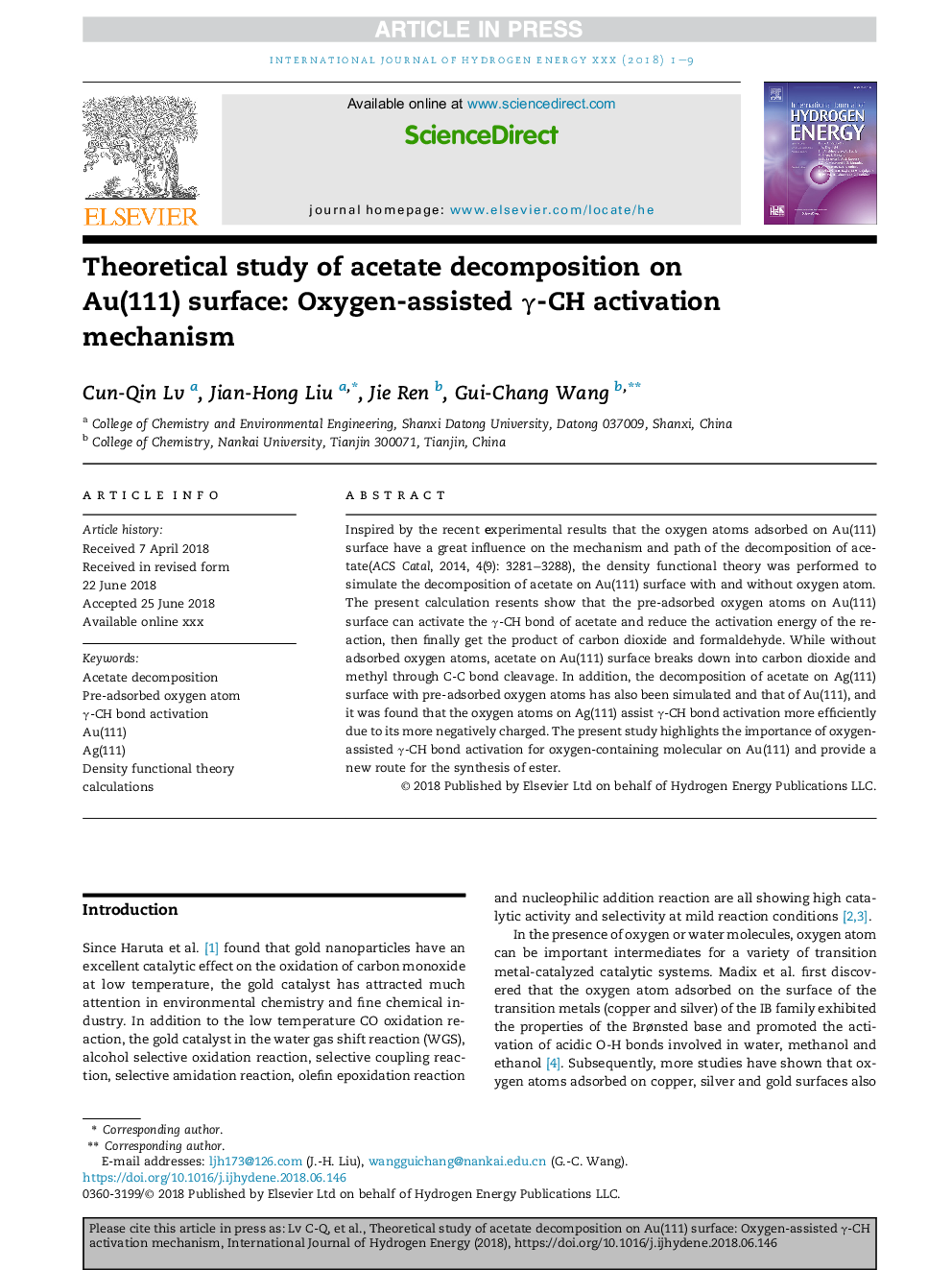| Article ID | Journal | Published Year | Pages | File Type |
|---|---|---|---|---|
| 8948236 | International Journal of Hydrogen Energy | 2018 | 9 Pages |
Abstract
Inspired by the recent experimental results that the oxygen atoms adsorbed on Au(111) surface have a great influence on the mechanism and path of the decomposition of acetate(ACS Catal, 2014, 4(9): 3281â3288), the density functional theory was performed to simulate the decomposition of acetate on Au(111) surface with and without oxygen atom. The present calculation resents show that the pre-adsorbed oxygen atoms on Au(111) surface can activate the γ-CH bond of acetate and reduce the activation energy of the reaction, then finally get the product of carbon dioxide and formaldehyde. While without adsorbed oxygen atoms, acetate on Au(111) surface breaks down into carbon dioxide and methyl through C-C bond cleavage. In addition, the decomposition of acetate on Ag(111) surface with pre-adsorbed oxygen atoms has also been simulated and that of Au(111), and it was found that the oxygen atoms on Ag(111) assist γ-CH bond activation more efficiently due to its more negatively charged. The present study highlights the importance of oxygen-assisted γ-CH bond activation for oxygen-containing molecular on Au(111) and provide a new route for the synthesis of ester.
Related Topics
Physical Sciences and Engineering
Chemistry
Electrochemistry
Authors
Cun-Qin Lv, Jian-Hong Liu, Jie Ren, Gui-Chang Wang,
